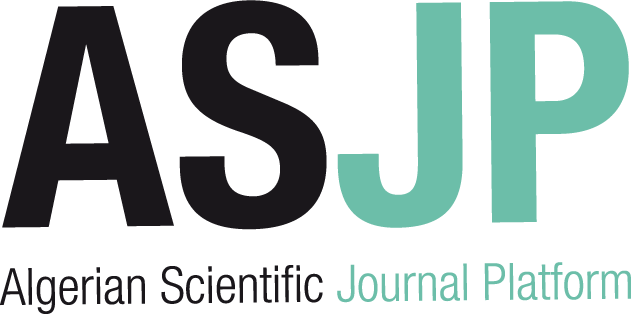| Titre : |
Introduction to computational plasticity |
| Type de document : |
texte imprimé |
| Auteurs : |
Fionn Dunne, Auteur ; Petrinic, Nik, Auteur |
| Editeur : |
Oxford : Oxford university press |
| Année de publication : |
2005 |
| Importance : |
XIV-241 p |
| Présentation : |
ill. |
| Format : |
25 cm |
| ISBN/ISSN/EAN : |
978-0-19-856826-1 |
| Langues : |
Anglais (eng) |
| Mots-clés : |
Plasticité
Plasticité -- Modèles mathématiques
Plasticity |
| Index. décimale : |
539.21 Propriétés des systèmes moléculaires (p. ex. plasticité, porosité, etc.) |
| Résumé : |
This book gives an introduction to computational plasticity and includes the kinematics of large deformations, together with relevant continuum mechanics. Central to the book is its focus on computational plasticity, and we cover an introduction to the finite element method which includes both quasi-static and dynamic problems. We then go on to describe explicit and implicit implementations of plasticity models in to finite element software. Throughout the book, we describe the general, multiaxial form of the theory but uniquely, wherever possible, reduce the equations to their simplest, uniaxial form to develop understanding of the general theory and we hope physical insight. We provide several examples of implicit and explicit implementations of von Mises time-independent and visco-plasticity in to the commercial code ABAQUS (including the fortran coding), which should prove invaluable to research students and practicing engineers developing ABAQUS 'UMATs'. The book bridges the gap between undergraduate material on plasticity and existing advanced texts on nonlinear computational mechanics, which makes it ideal for students and practicing engineers alike. It introduces a range of engineering applications, including superplasticity, porous plasticity, cyclic plasticity and thermo-mechanical fatigue, to emphasize the subject's relevance and importance. |
| Note de contenu : |
Au sommaire :
Microplasticity
Continuum Plasticity
Kinematics of Large Deformations and Continuum Mechanics
The Finite Element Method for Static and Dynamic Plasticity
Implicit and Explicit Integration of von Mises Plasticity
Implementation of Plasticity Models in to Finite Element Code
Superplasticity; Porous Plasticity: the Duva and Crow Model
Creep in an Aero-Engine Combustor Material
Cyclic Plasticity, Creep and TMF; Elements of Tensor Algebra |
Introduction to computational plasticity [texte imprimé] / Fionn Dunne, Auteur ; Petrinic, Nik, Auteur . - Oxford : Oxford university press, 2005 . - XIV-241 p : ill. ; 25 cm. ISBN : 978-0-19-856826-1 Langues : Anglais ( eng)
| Mots-clés : |
Plasticité
Plasticité -- Modèles mathématiques
Plasticity |
| Index. décimale : |
539.21 Propriétés des systèmes moléculaires (p. ex. plasticité, porosité, etc.) |
| Résumé : |
This book gives an introduction to computational plasticity and includes the kinematics of large deformations, together with relevant continuum mechanics. Central to the book is its focus on computational plasticity, and we cover an introduction to the finite element method which includes both quasi-static and dynamic problems. We then go on to describe explicit and implicit implementations of plasticity models in to finite element software. Throughout the book, we describe the general, multiaxial form of the theory but uniquely, wherever possible, reduce the equations to their simplest, uniaxial form to develop understanding of the general theory and we hope physical insight. We provide several examples of implicit and explicit implementations of von Mises time-independent and visco-plasticity in to the commercial code ABAQUS (including the fortran coding), which should prove invaluable to research students and practicing engineers developing ABAQUS 'UMATs'. The book bridges the gap between undergraduate material on plasticity and existing advanced texts on nonlinear computational mechanics, which makes it ideal for students and practicing engineers alike. It introduces a range of engineering applications, including superplasticity, porous plasticity, cyclic plasticity and thermo-mechanical fatigue, to emphasize the subject's relevance and importance. |
| Note de contenu : |
Au sommaire :
Microplasticity
Continuum Plasticity
Kinematics of Large Deformations and Continuum Mechanics
The Finite Element Method for Static and Dynamic Plasticity
Implicit and Explicit Integration of von Mises Plasticity
Implementation of Plasticity Models in to Finite Element Code
Superplasticity; Porous Plasticity: the Duva and Crow Model
Creep in an Aero-Engine Combustor Material
Cyclic Plasticity, Creep and TMF; Elements of Tensor Algebra |
|  |


 Ajouter le résultat dans votre panier Faire une suggestion Affiner la recherche
Ajouter le résultat dans votre panier Faire une suggestion Affiner la recherche






 539 Nature physique de la matière
539 Nature physique de la matière



